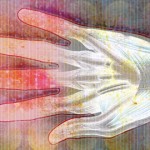The skin rash is variable, yet usually includes erythematous lesions on extensor surfaces especially in sun-exposed areas such as the small joints of the hands (Gottron’s papules), knees, elbows, and medial malleoli of the ankles. The classic heliotrope rash of the eyelids, periorbital edema, and erythematous malar rash that can occur in a mask-like distribution is often confused as a systemic lupus erythematosus rash. Psoriasiform lesions can occur on the extensor surfaces and scalp, with alopecia in a smaller subset of patients. Nailfold and gingival telangiectasias are seen commonly and may result in bleeding of the gums. Cutaneous ulcerations, when present, are thought to represent a severe phenotype of the disease. An amyopathic form of JDM occurs in <5% of children.4 Calcinosis is seen in 20% to 30% of children with JDM and may present as small punctate lesions, especially in areas of trauma (elbows, knees, waist), tumoral, sheet-like masses, or liquefied collections.5
Other clinical findings seen with JDM include fever, weight loss, shortness of breath, dysphagia, dysphonia (such as nasal or hoarse voice), Raynaud’s phenomenon, and arthritis. In severe disease, dysphagia, cutaneous ulcers, gastrointestinal ulcers, or features of a vasculopathy may all require immediate immunosuppression. Pulmonary dysfunction is also common and mainly due to weakness in the respiratory musculature. Interstitial lung disease can also be seen in JDM, though less frequently than in adults.6
Cardiac involvement can lead to conduction abnormalities and pericarditis/myocarditis. Other less frequent clinical findings include poikilodermatous skin lesions, lipodystrophy, retinitis, iritis, seizures, and renal impairment.
There is symmetric proximal muscle weakness with and without elevated levels of serum muscle enzymes including creatine kinase (CK), aldolase, aspartate transaminase (AST), alanine transaminase, and lactate dehydrogenase (LDH). When elevated, these results help to differentiate disease quiescence or remission from active disease. However, a subset of subjects may have normal values at diagnosis and during times of muscle disease activity. CK blood levels may have a poor correlation with disease activity because CK levels become less sensitive with a greater duration of the disease.7 CK and the other enzymes may be discordant with severity of muscle disease on biopsy and with clinical muscle strength improvement. The level of muscle enzyme elevation early in disease may not predict long-term outcomes. Some clinicians believe that LDH and AST in combination may be the best indicators of disease flare.
Lymphocyte counts and subset characterization, neopterin, and von Willebrand factor products may serve as sensitive markers in a subset of patients.8,9
Autoantibody Profile in JDM
ANA is present in more than 70% of children.10 Rheumatoid factor and antibodies to SSA, SSB, Sm, RNP, and DNA may rarely be seen in some patients. Antibodies to PM/SCL identify a small, distinct subset of patients with a protracted disease course, often complicated by pulmonary interstitial fibrosis and/or cardiac involvement as well as sclerodactyly.14


